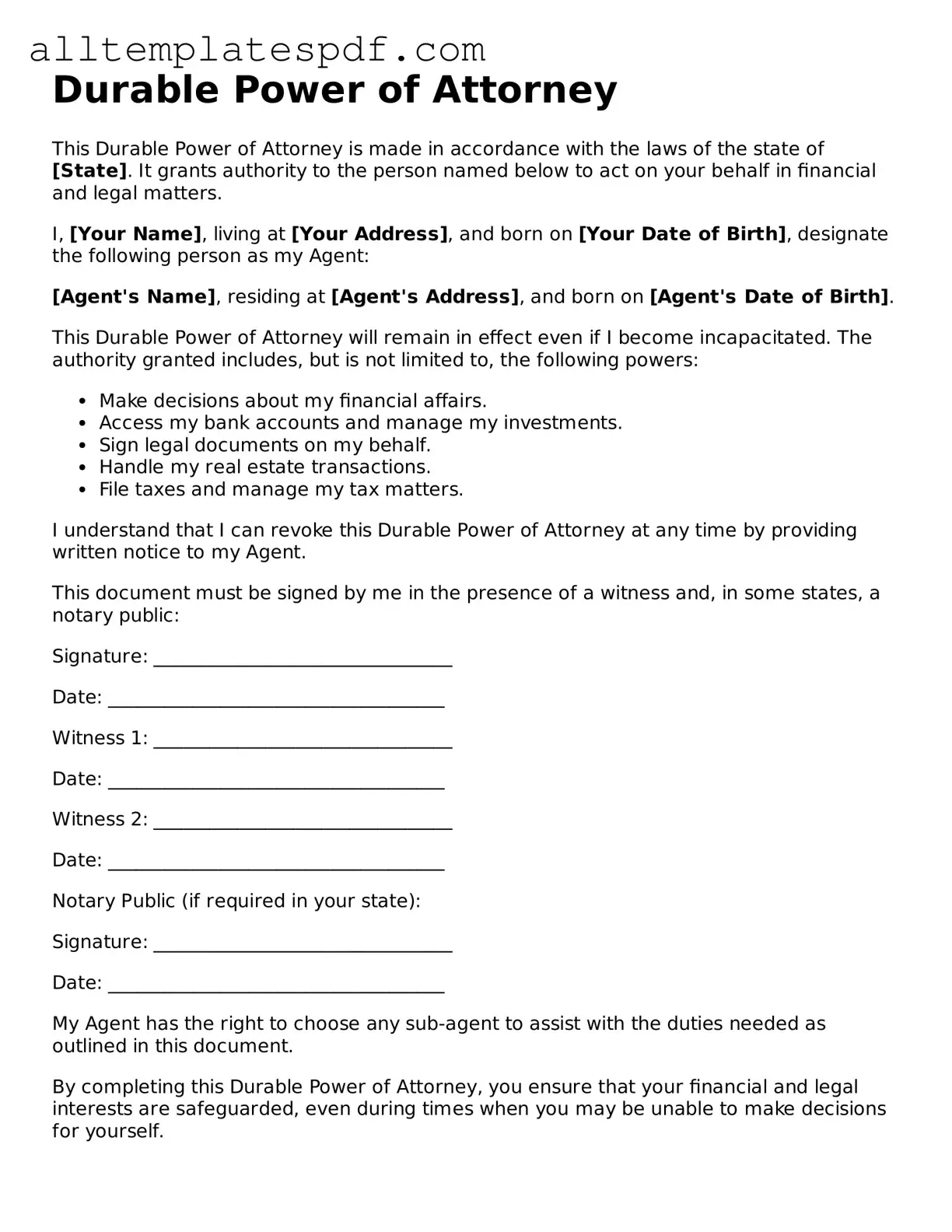Attorney-Approved Durable Power of Attorney Template
A Durable Power of Attorney form is a legal document that allows an individual to designate another person to make financial or medical decisions on their behalf, even if they become incapacitated. This form provides peace of mind, ensuring that someone trusted can manage important matters when needed. To take control of your future, consider filling out the form by clicking the button below.
Open Editor
